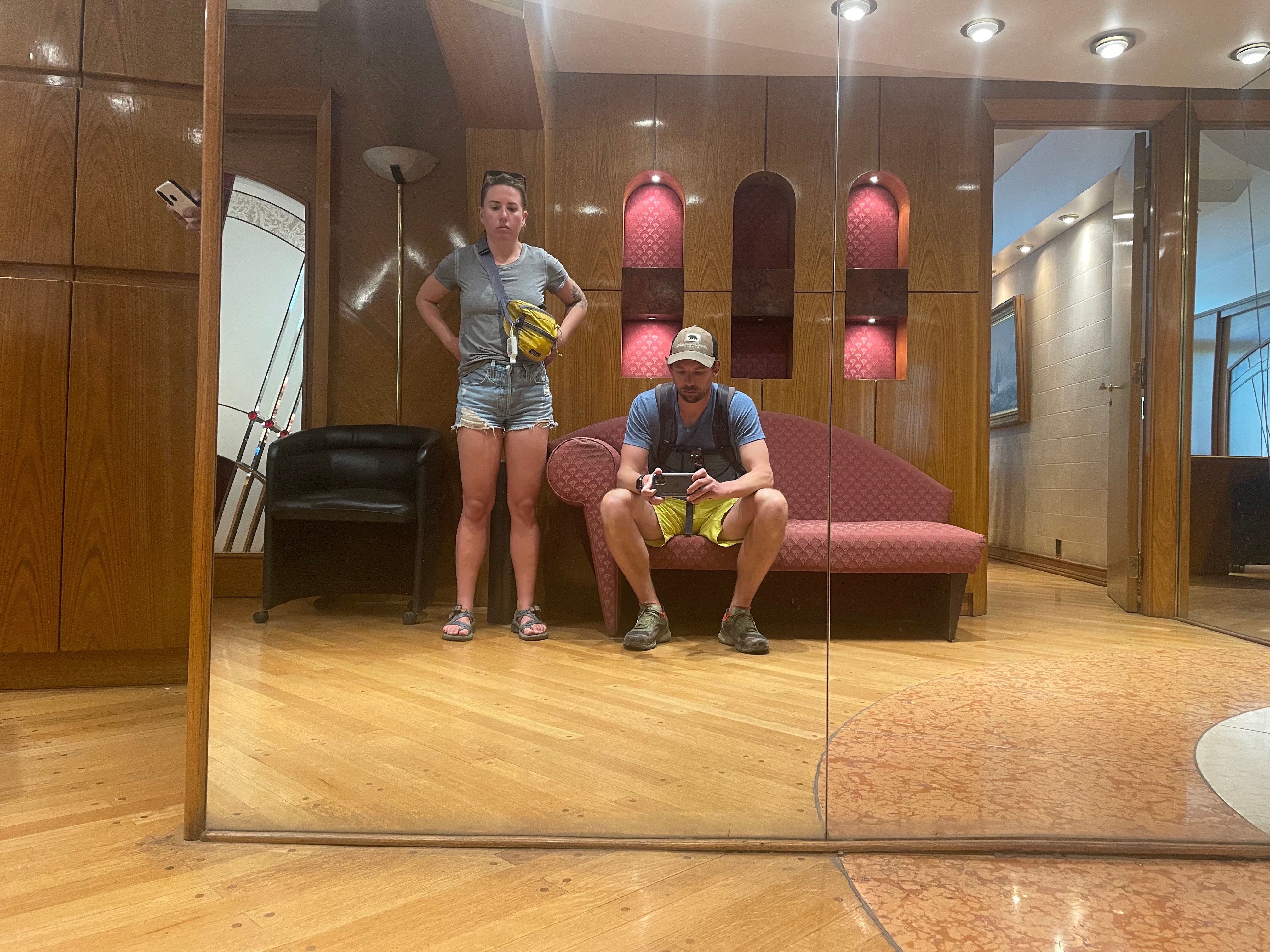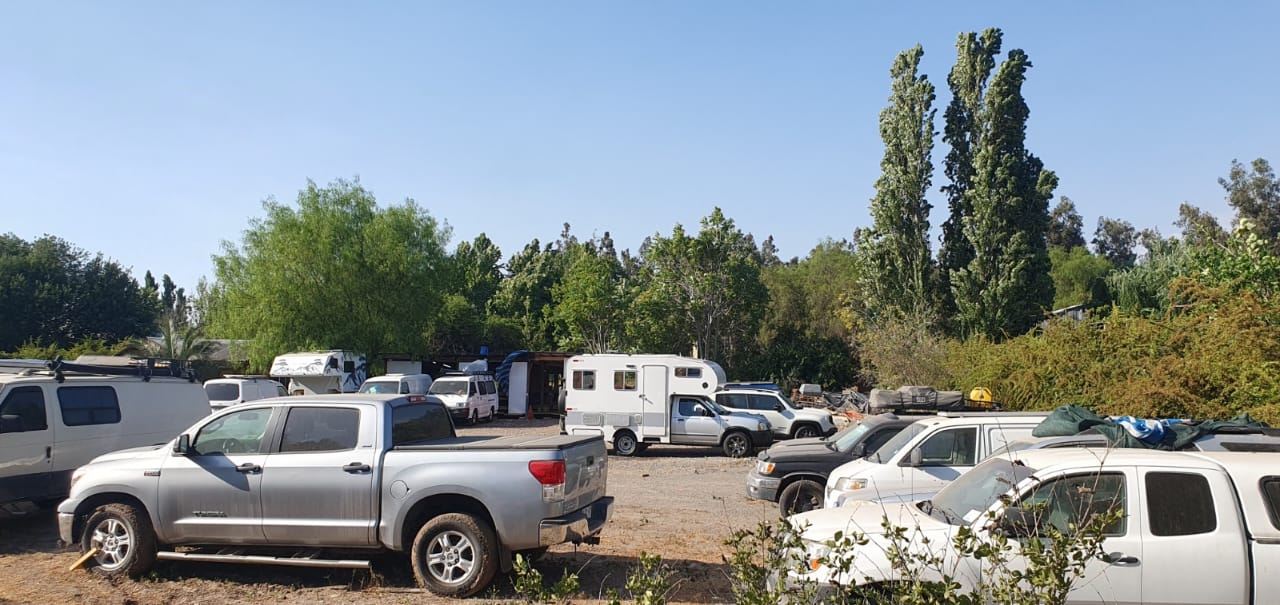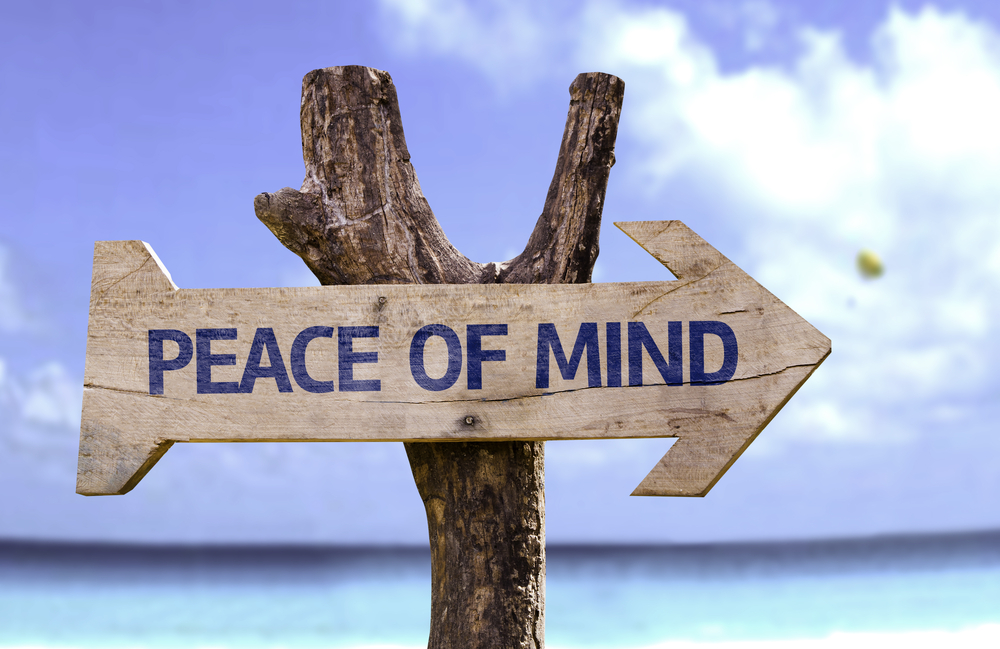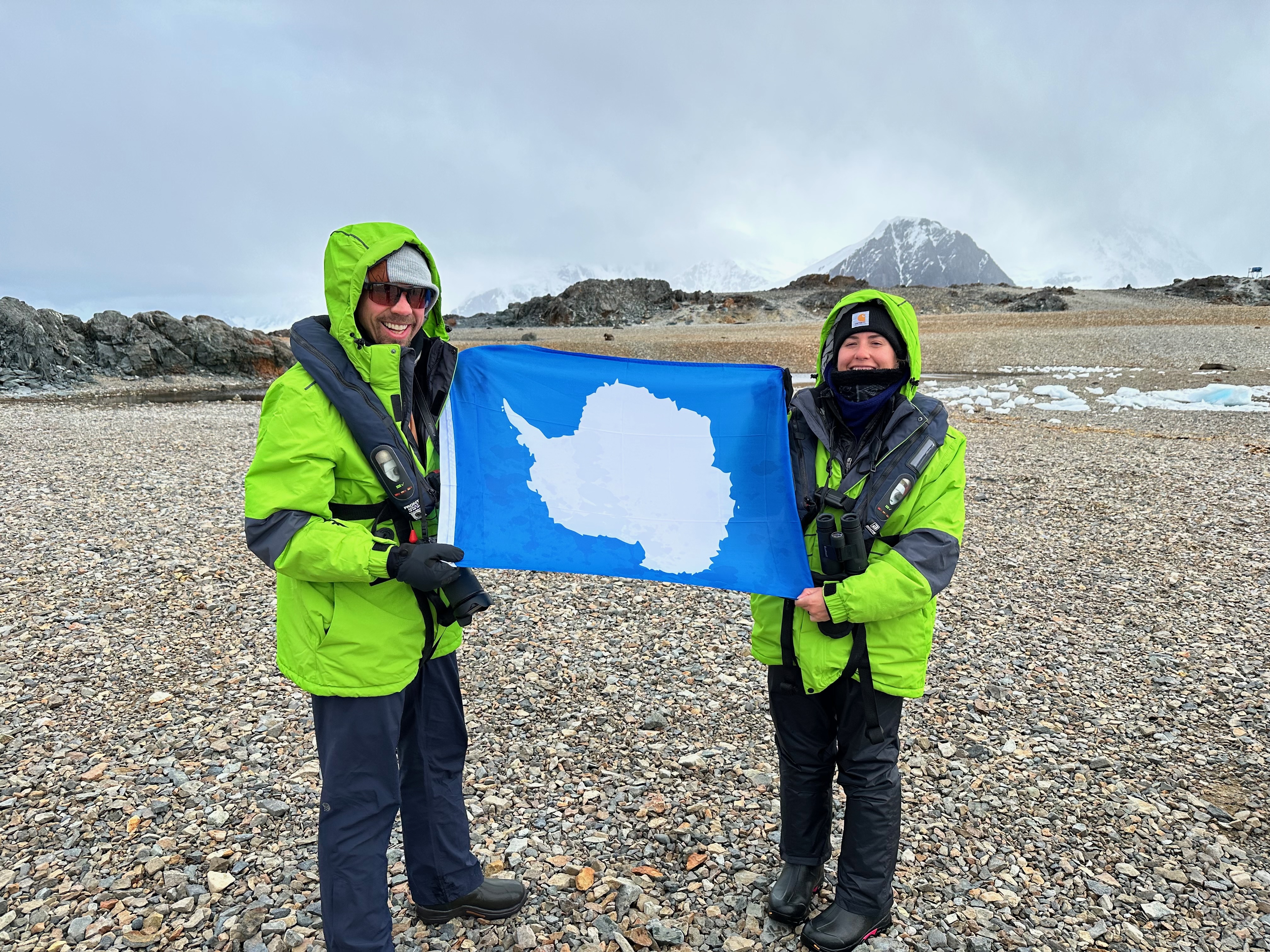Guide to Blue Dollar Argentina
What is the Blue Dollar in Argentina?
Blue Dollar Argentina Explained
Disclaimer: this information changes frequently so please send over any updates as you find them and we’ll update the Blue Dollar Guide. If you buy products from our links we may receive commission which we really appreciate as we get no compensation for taking time to put this information together for you.
This guide will help you understand how to get the most value for your money while utilizing the Blue Dollar Argentina.
When we first heard about the Blue Dollar in Argentina and the black/grey market it’s associated with, we were pretty nervous about making the exchange and taking in hundreds of $$’s to a stranger in a foreign country.
But using this cash exchange method, we always felt safe and it gets you the absolute most money in exchange for your Dollars or Euros. Here we’ll share our experience to alleviate confusion and ensure simplicity.
We took down a few thousand $$'s as we knew we'd be there for months, so we've done many forms of exchanges and wanted to help you all learn from our experience.
Why does the Blue Dollar exist?
The Blue Dollar Argentina was created because, the Argentine economy has had a rough go of it over the years. Inflation has run rampant at multiple periods, sometimes topping 100%+, which has led the value of the peso to be very unstable. Along with the lack of stability the government has put in place strict currency controls that do not allow locals to exchange their pesos to dollars. So, they’ve been looking for a way to have a safer store of currency that is more stable.
Enter the US dollar, Euro and Brazilian Real.

The Blue Dollar term, references the blue strip on the newer American $100 bills(which is preferred, older bills may get lower rates). Where locals were willing to pay a higher rate than the “Official market rate” to receive larger American bills in exchange for a higher rate in pesos. This enables them to store cash that will not lose significant value over the course of a month/year.
See Today’s Rates here:
This is my new favorite site to see all rates from Visa, cash and Western Union:
Feb 27th
Official: 841:1
Blue 1055: 1
Visa: 975:1
Western Union: 1095:1 (+ their fees, Create an online account if you don't have one already)
Feb 5:
Official 829: 1
Blue 1150: 1
Visa 1157: 1
WU 1244: 1 (not taking into account the fees)
January 13th Update:
An example of how quickly this can change. With a new president in office in Argentina in December he changed the Official rate now:
Official 800:1
Blue 1080: 1
As of this writing August 2023 the rates are:
Official 347:1 ARS:USD
Blue 710:1 ARS:USD
Just over 2X what you would get if you exchanged money at an official money exchange. 💰 🤯
A few quick tips before we dive in:
DO NOT take money out of an ATM they change at official rate.
Don’t exchange too much - maybe ~2 weeks worth of cash, due to inflation you could see rates change significantly over the course of a month (why the locals value Blue Dollar) - only caveat is if you’re going to tiny, non tourist towns
Don’t Exchange @ Airport - almost always the worst rate for cash exchange…and anything else you want to buy
You might end up with a big load of bills - Some places run out of big bills (1,000/2,000 are largest in Argentina) if you’re planning for a big exchange of $500+ you may want to bring a purse, fanny pack, backpack or jacket with large zipper pockets. If you end up receiving $500s or $100s it can be A LOT to carry.
Sarah has been using a fanny pack like these from Patagonia or this one from Cotopaxi to safely store money.

You could also use a Money Belt or Bra Hidden Money Pouch, but for any sizable exchange you need something with larger capacity to store your bills.
WHERE TO GET THE BEST RATES?
- CASH - historically, the best value for your $$’s AND some stores or restaurants offer 10-20% discounts when paying in cash 🤯
- Ask your airbnb host, hotel, Facebook/Whatsapp group or tour guide where to find reliable Cueva/Exchange
- To get the best value for your money, bring down cash. The maximum you can enter a country with is $10,000 USD.
- Ideally new USD or EUR, large ($100 USD) bills in mint condition. No smudges, tears, creases, folds or marks on them. The newer you can find the better.
-
- You’ll find sections of the town with many people standing on the street saying “cambio, cambio” and from there it’s a simple discussion asking their rate. You can shop around and ask a few as there’s usually some slight variation between folks. (See locations below)
-
- Don’t exchange at the airport, you will get Official rate
- Don’t exchange at the airport, you will get Official rate

- WESTERN UNION - You give up 5-15% in value, safe, but can be challenging with long wait times or limited withdrawals
- This is where you can setup a bank or credit/debit card transfer from your home currency into Argentinian Pesos (ARS). The rates from Western Union are typically good, but they have been increasing their fees to facilitate transfer. WU rates have been getting better than exchanging cash lately.
—NOTE— Western Union is usually NOT a place to exchange cash - TIPS for Using Western Union
- Create an online account & download their app in advance of arrival
- Google Maps is helpful to identify locations where you’ll be for WU - look at reviews (many are bad), find the best as option #1 & hours of operation
- Get there early - ideally arrive right when they open - the lines can get REALLY long & they can run out of $$
- Use your FULL NAME on your passport when setting yourself as the reciever
- Bring your passport to the location
- Small cities may have limited amounts you can withdrawal (eg: 70,000 ARS in Puerto Iguazú)
- They do not fill partial orders, if your order is above their limit, they can’t fulfill it. You should be able to EDIT your order on the WU app to a lower amount.
- The fee ranges move up in different bands like $1-500, $501-$999, $1000+. To get the best effective rate I like to take out the top end of a fee band
- Do a test Transaction to see what rates & fees will be. Note: Your first time may be free!
- Create a Send Money Transaction —> Cash Pick-up —> select an amount to send $$ —> your method of transfer (I prefer bank or debit card as it has lower fees, BUT bank can take more time whereas debit card can be instant)
- On the final step you’ll see The Rate & The Fees
- Add the fees to your total Dollars then divide by the number of pesos to get your real effective rate
- Example: I send USD $100 @ 741.38 rate = ARS $74,138
- 106/74138= 699.41 = Real Effective Rate
- You give up ~5-6% in this case
- This is where you can setup a bank or credit/debit card transfer from your home currency into Argentinian Pesos (ARS). The rates from Western Union are typically good, but they have been increasing their fees to facilitate transfer. WU rates have been getting better than exchanging cash lately.
- Credit Card/MEP Rate - Easiest way to get Blue Dollar rate - Lose 10-15% of value - As of January '24 the MEP rate on cards is almost the same as cash, in some instances the rate is BETTER than exchanging cash.
- For a long time Credit Card companies only honored the Official Rate, but since early 2023 almost all credit cards are honoring the MEP rate which is close to Blue Dollar Argentina rate. In our experience this rate is 10-15% lower than the Blue Rate for cash. While Blue rate is at 700, MEP rate may be 600-630. Still good, but not AS good as cash, especially if you find shops offering 10-20% cash discounts
- Visa you can make a charge and see it on your statement instantly at the MEP rate on. Your app/online login should show up in your local currency. Remember the cost in ARS/Pesos, divide by what you see on your account and you have your effective rate.
- American Express/Mastercard has typically taken 1-2 weeks to issue a refund to even you out to the MEP rate
- Credit card is great because it takes NO work on your end, but you give up 10-15% and the business owners lose a bit of money paying for transaction fees
- Make sure to charge the card in ARS/Pesos not your local currency (we do this in every country anyway)
- Crypto
- I have not done this yet, but it sounds like a great way to transfer funds from your US bank account to someone in Argentina who will buy your stablecoins like USDT and sell you ARS pesos.
- There are quite a few WhatsApp groups for nomads buying and selling money where you can find someone to facilitate the exchange
Locations in Specific Cities to exchange cash for Blue Dollar:
Blue Dollar Mendoza
We have a great cueva here but their information is private. Typically open Monday to Friday 8AM-1PM reach out on instagram @VitaminSeeMore for the WhatsApp contact info
If you want to exchange on the street Av. San Martin & Gral. Espejo typically has folks on the street offering Cambio
Blue Dollar Buenos Aires
Calle Florida is a popular place to find folks exchanging money on the street.
Florida 943 was recommended to us - it's a mall once you walk in go straight back and you'll see a cambio sign and the office there offers money exchange
Florida 860 Shop 113 (you'll see numbers up top of the stores when you enter) is also a great spot to change money.
Favorite Western Union in Palermo Guemes 4471
You can walk down the street and have 10 people within 1 block offering you "cambio, cambio, cash money" Their rates have room for negotiation, but don't waste too much time negotiating over 0.5%.
You can also ask your host/guide/hotel for a good recommendation for Blue Dollar exchange.
Blue Dollar Puerto Iguazú
Despensa El Chino was easy, had no problem changing Reales or Dollars to Pesos
Austral Cambio - C. Bonpland 49
Blue Dollar in Bariloche
Reach out on instagram @VitaminSeeMore as we have a direct contact here
Changing Money in smaller cities - look for shops/restaurants with signs in the window offering Exchange or $500 USD. Going to places like El Chalten we didn't find anything official outside of restaurants and shops, the rates were decent.
This should help answer your questions about the Blue Dollar Argentina so you can be prepared to come to this wonderful country and support their economy by infusing your tourist dollars and local currency to give them some stability and get yourself a great deal!
If you have questions, connect on Instagram and we're happy to help!


